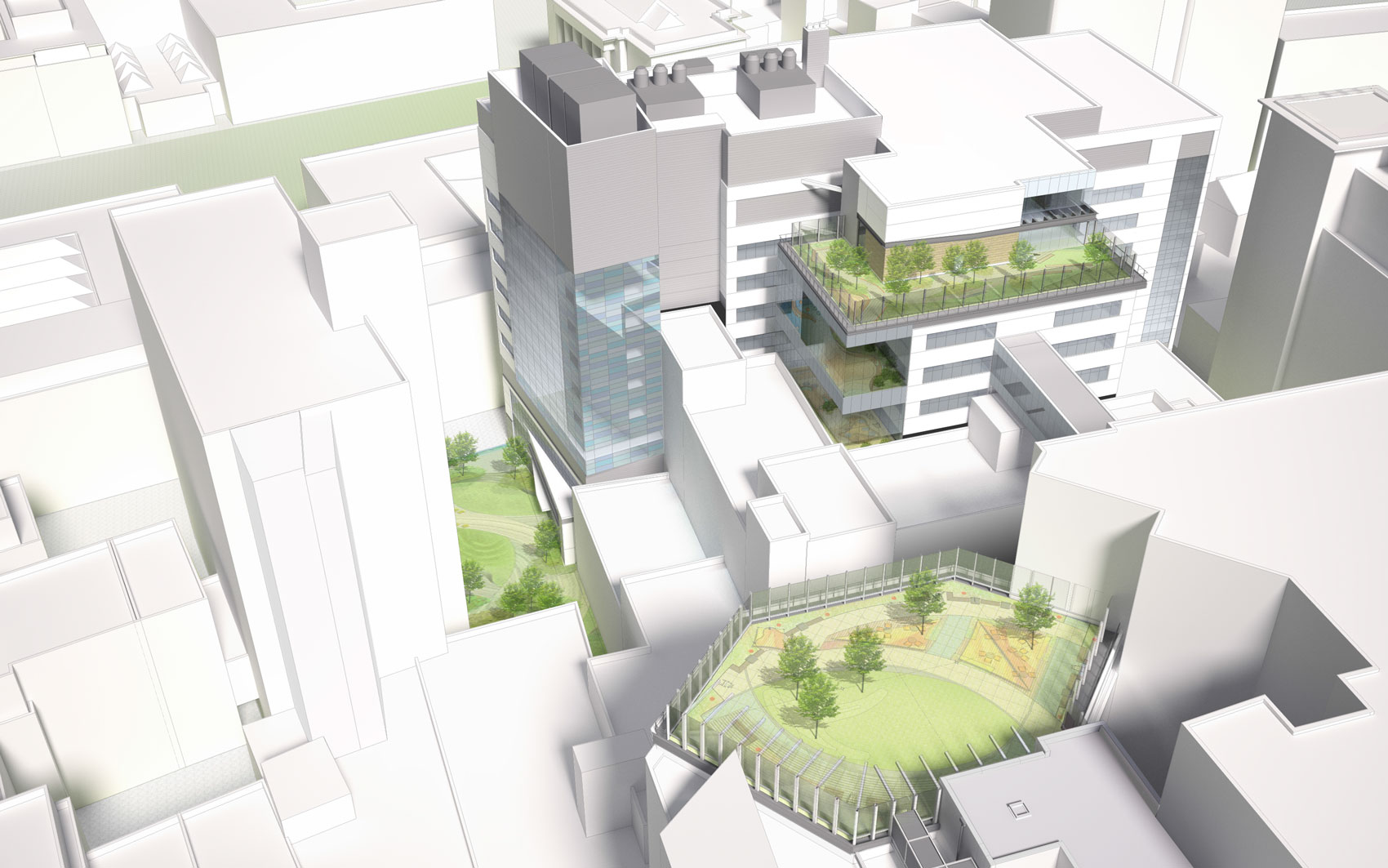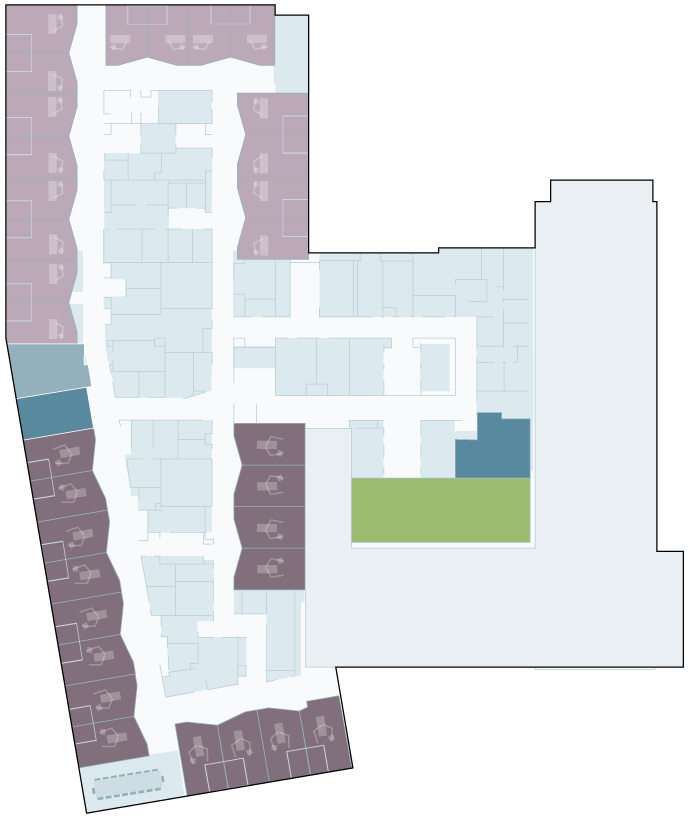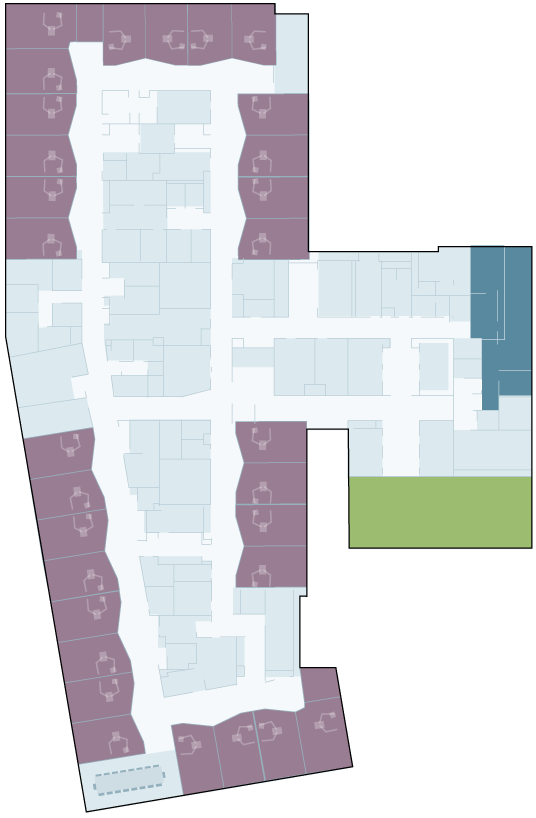
Boston Children’s Hospital isn’t just adding a brand-new, state-of-the-art facility, though the Hale Family Building will be just that when it opens in the winter of 2022. But the $636 million building also serves a catalyst for a new approach to patient care. That starts with the simplest detail: a pedestrian bridge that will make it easier for parents and patients to get into the hospital from the parking garage. The new facility reorganizes cardiac care, including adding collaboration spaces so specialists can work together more easily on complicated heart conditions. Newborns who need intensive care get a floor of their own. There will also be several gardens and interior green spaces to enjoy. Here’s a look at some of the changes in the works.
Level 1
After the Hale Family Building opens, Level 1 of Boston Children’s Hospital will gain a new chapel and a variety of displays related to the hospital’s rich history, including artifacts from the Wolbach Building, the former administrative structure on the site.Perhaps the most welcome sight on this level will be Anne and Olivia Prouty’s Wishingstone Garden. The first four numbered items in this image will be in the Hale building, the rest, including the entrance to the just-opened Fazzalari Skybridge, are in the existing building.

Level 6
The Hale Family Building dedicates five floors to cardiac care, the second floor for outpatients, and floors 6 through 9 for inpatients. The sixth floor will be for diagnosis and treatment. The center’s design encourages collaboration among specialists on rare and complex cases.

Level 8
Cardiac patients will recover from procedures on levels 7, 8, and 9. Floor 7 and half of 8 are for intensive care. Level 8 also will have physical therapy and cardiac wellness rooms, a garden, a family lounge, and some rooms for acute care patients. Level 9 is all acute care patients. All rooms are private, with accommodations for family members to sleep over.

Level 11
Children’s new neonatal intensive care unit will take up the top floor. It will offer 30 private rooms, all with their own bathroom and shower, breast pumps, and sleeping space for two parents. A family lounge overlooks the 10th floor garden. The hospital’s breast milk storage and formula lab are also here.
